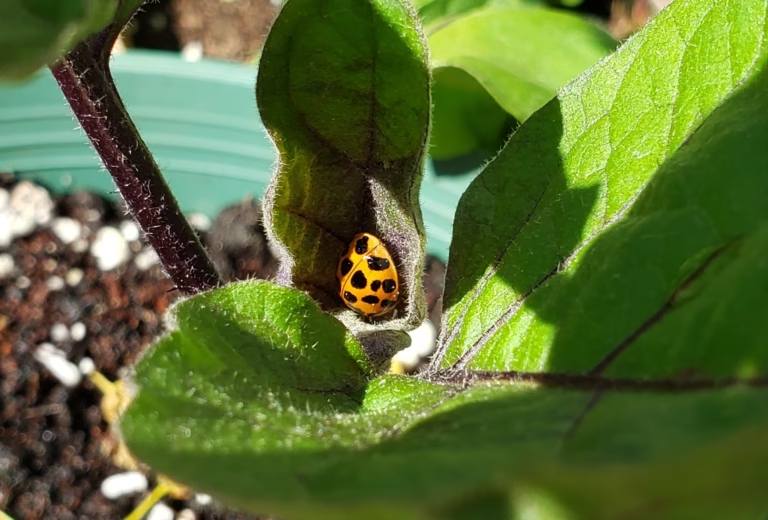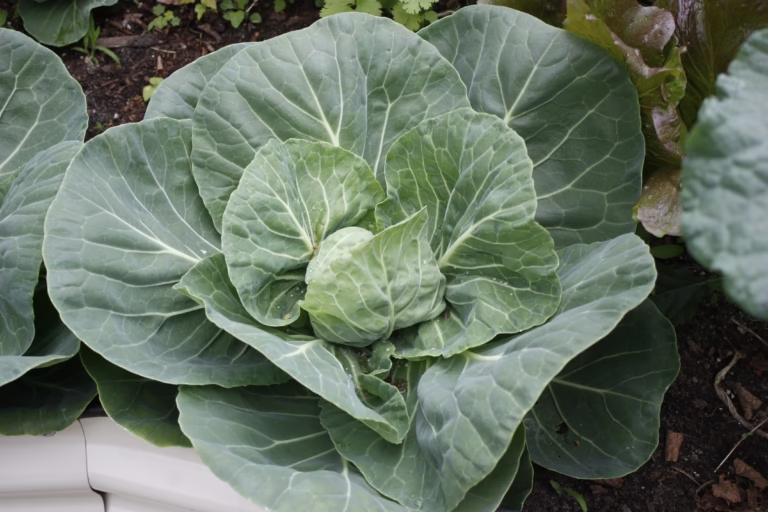
How to Grow Eggplants from Seed to Harvest

Eggplants are one of the best vegetables to grow and eat! They are underrated and underappreciated but taste delicious and can be used in so many ways. New varieties are slowly showing up at the grocery store, but for the longest time the large, mushy purple eggplants were the only variety on the market (Globe eggplants). And this mushy food is the only thing people associate with eggplant. I’m not sure who decided that this was the only variety that should be sold, but they made a mistake. If this is the only kind of eggplant you’ve eaten, let me tell you, you do NOT know eggplants!
A Quick Summary
Eggplants are part of the nightshade family and there are over 1,000 varieties that are known. These heat loving, slow growing plants are a great addition to any garden because they can be extremely productive, and are a versatile vegetable in the kitchen. Eggplants can be grown in pots, containers or directly in the garden.
Varieties

This blog is reader supported. Some of the links in this article are affiliates and support our work without costing you extra.
Eggplant varieties feel almost limitless. There are varieties that are tied to specific cultures (Indian, Thai, Italian), they come in a multitude of colours (from white to green to purple) and come in a variety of sizes (from golf ball to the size of your head!).
Eggplants are one of those fruits that should be grown based on how you want to eat them. The smaller varieties are great for curries, while the larger ones are better for stuffed eggplant or eggplant lasagna. Also, the varieties have a wide range of dates to maturity from just under 60 days to over 80 days, so choosing a variety that suits your growing zone is important.
Some of the more common varieties people often grow in their garden include Millionaire, Diamond and Long Purple.
Sun Requirements
Eggplants prefer full sun, over 6 hours a day. However, the more sunshine they get, the better.
Soil Preferences

Eggplants prefer fertile soil. Apply compost in your garden at the beginning of the season to ensure your garden has enough nutrients to produce fruit. Avoid manure as too much nitrogen will cause bushy plants with no flowers or fruit.
Have you seen our FREE interactive square foot garden planner? You can grab your copy here!
How to Plant Eggplant Seeds
Since eggplants are a heat loving plant, you will get best results by starting your seeds in a warm, moist place. If you have access to a heat mat and a dome, use these tools to increase the germination rate and speed. Seeds can take over a week to germinate so it’s important to be patient. Once the seeds have sprouted, place them under a grow light that is 1-2″ above the plant.
Caring for Seedlings
Once your seedlings have grown their first 2-3 sets of true leaves you can transplant them into a larger pot. Avoid upgrading them into large pots too quickly as this can stunt their growth. Transplant them into 2″ pots and once they outgrow those pots you can upgrade them one last time before preparing them to harden off. Keep the grow lights 1-2″ above the plants at all time to keep them from growing leggy and be careful for pests such as aphids that can hide in the curled, young leaves and stunt their growth.
Continue your garden learning:
- How to Invite Ladybugs into Your Garden
- How to Grow Cabbage from Seed to Harvest
- Your Most Asked Raised Garden Questions ANSWERED
- 6 Tricks to Grow Massive Onions in Cold Climates
- Want a Huge Pepper Harvest? 6 Tips for Cold Climates
Planting Guide

Plant eggplants outdoors once the night time temperatures are consistently over 10°C (50°F). You can plant them out slightly earlier if you grow them under cover until the temperatures increase. Add a stake beside each plant so that you can support them as they grow. It’s important to do this early so that you don’t damage the roots when the plant gets larger, and it helps them grow more upright and straight. Often eggplants can tip over from the weight of the fruit, so supporting the plant early can prevent any stem damage in storms. Tie them to the stake with sisal rope or some other strong, but soft item.
Watering
Eggplants are not too demanding with water, however keeping them consistently watered will help the fruit grow and not stunt.
Harvesting

Since eggplants don’t ripen to a specific colour, but grow from start to finish as their final colour you can’t rely on that as an indicator for when to harvest (vs peppers will ripen to their final colour). Here are three ways you can determine if your eggplant is ready to be harvested. The first is knowing what size the mature fruit is meant to be (which you can find on your seed packet) and picking it once it’s reached that size. A second clue is if you push on the eggplant and it’s firm, but does have some give to it. The final clue is if the fruit’s skin has dulled. These three steps will help you determine when it’s time to harvest your fruit.
As the season comes to an end (mid-end of August for many of us), cutting off the top of the plant and removing flowers will help move energy from growing new fruit to ripening the remaining fruit on your plant. I highly recommend topping your eggplants in order to prioritize the fruit left on your plant.
Ways to Enjoy Eggplant

This is the part of the article that I am most excited about! Convincing you on why you should grow eggplant because of the MULTITUDE of ways you can eat it. Here are a few different ways to enjoy eggplant: baba ganoush (a dip like hummus), stuffed eggplant (my favourite meal in Turkey), eggplant parmesan, Indian eggplant curry (my favourite curry.. catching the trend?), cooked in thai curries whole, diced and roasted in the oven. Have I convinced you yet? I’m sure I’m missing so many more great options but here are a few I love to make.
Join the family, get advice straight to your inbox!
Common Pests & Problems
Similar to peppers, eggplants don’t have a ton of pests or diseases in my experience. This is another great reason to grow them since they are so low maintenance. In terms of pests, flea beetles can eat the leaves but often aren’t damaging enough to hurt the plant. Aphids and tomato hornworms may also be on your plants, but again I have never experienced populations large enough to damage my plants.
Another common pest for eggplants is squirrels. They are known to take bites out of eggplants, and depending on how hungry they are, they may just take a nibble, or sometimes they might eat an entire eggplant. It doesn’t happen often in my garden, but it does sometimes.
In terms of disease, blight is the most common to affect eggplants. If your eggplant has blight it often looks like a bruise on the fruit or as if part of it is rotten. If your eggplant has blight, remove the entire plant and put it in the garbage.
Saving Eggplant Seeds

Eggplant seeds are simple to save. Make sure that the original plant that you grew wasn’t from a hybrid seed. You can’t save seeds from hybrids since they are unstable and you don’t know what you will grow next year. Also, take seeds from your most productive and successful plant.
The most important step is to make sure not to pick the eggplant too early. Near mid to late season, choose one eggplant that has done well and leave a mature fruit on the stem for as long as possible. If you pick the eggplant too early the seeds will be immature and won’t be viable. You can leave the eggplant on the stem right until the end of the season to make sure the seeds are fully mature and once you pick it, you can cut it open and save as many seeds as you wish.
Lay the seeds out in a dry place for up to a week to allow them to dry fully. Flip the seeds over once a day so they can dry on both sides. Place them in a labelled container and store them in a cool, dry place.






